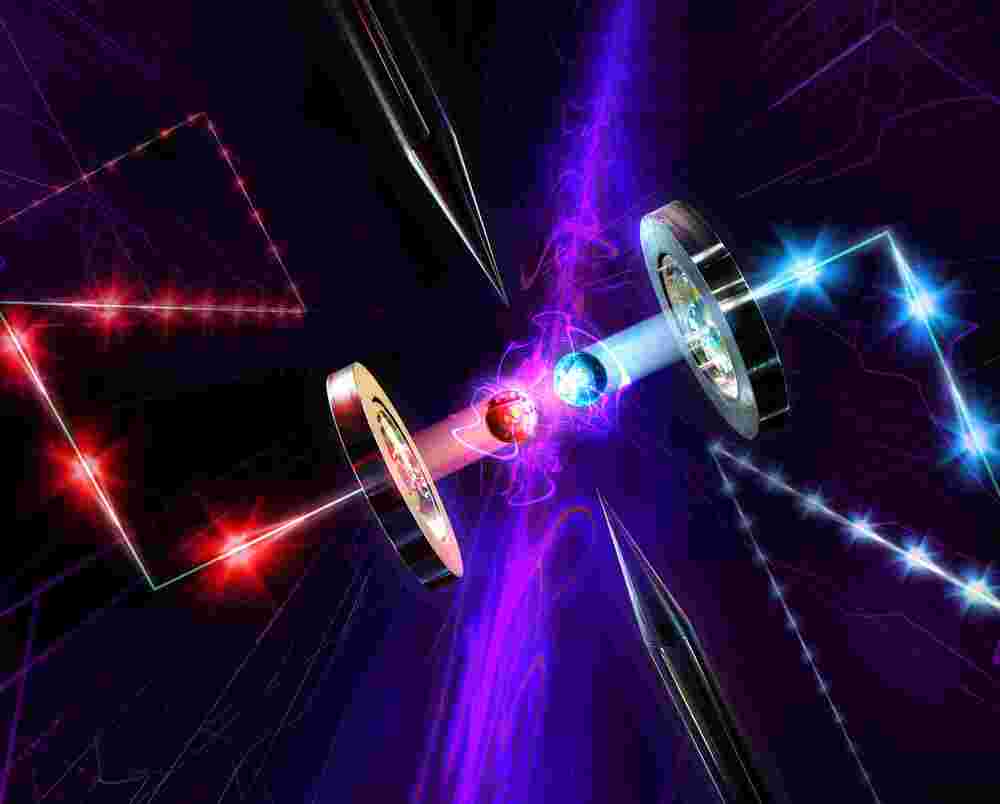Physicists at the Universities of Innsbruck in Austria and Paris-Saclay in France have combined all the key functionalities of a long-distance quantum network into a single system for the first time. In a proof-of-principle experiment, they used this system to transfer quantum information via a so-called repeater node over a distance of 50 kilometres – far enough to indicate that the building blocks of practical, large-scale quantum networks may soon be within reach.
Quantum networks have two fundamental components: the quantum systems themselves, known as nodes, and one or more reliable connections between them. Such a network could work by connecting the quantum bits (or qubits) of multiple quantum computers to “share the load” of complex quantum calculations. It could also be used for super-secure quantum communications.
But building a quantum network is no easy task. Such networks often work by transmitting single photons that are entangled; that is, its quantum state is closely linked to the state of another quantum particle. Unfortunately, the signal from a single photon is easily lost over long distances. Carriers of quantum information can also lose their quantum nature in a process known as decoherence. Boosting these signals is therefore essential.
